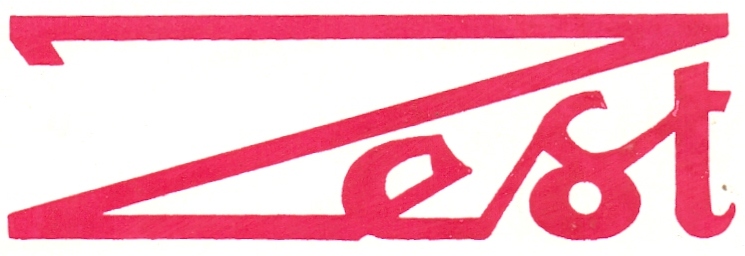Teradata
30 hrs Theory Sessions
30 hrs of Practice Sessions
20 hrs of Hands-on Project
Introduction
Gain in-depth knowledge of all the core concepts of Teradata from industry experts with hands-on training sessions. You will learn how to build data warehousing applications using Teradata through real-life projects and use cases. This will help you successfully clear the Teradata certification exam and advance your career.
Course Objective
Upon completion of this training, you will be able to :
- Understand Teradata architecture and indexing mechanisms
- Understand the competitive advantages of Teradata over other RDBMSs
- Use Teradata application utilities for importing/exporting data
- Learn how to process data in Teradata tables using SQL processes
- Implement performance tuning techniques and optimize queries
Pre-requisites
Concepts and commands for Windows, UNIX, or Apple macOS, and ANSI Structured Query Language (SQL)
Course Curriculum
TERADATA Architecture
Teradata is unique from other databases because of its unique architecture. In this module, you will learn, main components of TeraData Architecture (PE, AMP, BYNET)
Parsing Engine (PE)
Request and Response Parcel
Access Module Processors (AMPs)
Bynet, Data access Handling
TD Config Utilities
Config and Reconfig
TERADATA Database Space
Teradata is designed in such a fashion, to reduce the DBA’s administrative functions when it comes to space management. This module will let you know, in how ways Space is configured in Teradata DBA Training.
Permanent Space
Spool Space
Temp Space
Indexes
DBC Dictionary Tables
The Teradata Database Data Dictionary is composed of tables and views that reside in the system user named DBC. The tables are reserved for use by the system and contain metadata about the objects in the system, privileges, system events, and system usage. This module trains you on different types of views and how to track logs (LOGON, LOGOFF).
Data dictionary
Parsing Engine
System Views
Database Views
DBC Users View
Indices View
All Temp Tables View
Using DBC AMP Usage
Using DBC Table Size
Logon and Logoff Tracking
Access Rights, Roles, Profiles
Roles are generally used to manage the access rights, while profiles are used to maintain user parameters / environment settings like spool space, account string etc
Access rights (Auto, implicit, Explicit Rights)
Roles and Profiles
Creating Roles and Profiles
DBC. Role Info and DBC. Profile Info
Teradata Query Analysis and Tools
The Teradata Database Optimizer analyzes steps required to execute each query, then chooses the most efficient path that returns answers in the minimal amount of time.
Data base Query Log(DBQL)
DBQL Tables and Views
Access Logging
Statistics Wizard
Index Wizard
TSET
System Access Control Levels
Teradata Database privileges for system-level access control are granted by administrators to databases and users (they cannot be defined on any database object).
TD (TeraData) Password Encryption
Password Security Features
Host Logon Processing
GRANT/REVOKE LOGON
Session Related Views
DBC session Info Info View
Data Access Info Views
Access Log Rules Views
Access Log Views
Priority Scheduler
Priority Scheduler is a workload-management facility that controls access to system resources by the different active jobs in Teradata Database. In this module, you will learn how to define different priorities for different categories of work, and comes with a number of flexible options.
PS (Priority Scheduler) Partition Hierarchy PSH Def
Resource Partition Examples
Multiple resource Partition Example
Scheduling Policies
Performance Periods
TD Manager
Learn, How to Start TD manager, Manager App and also how to connect to the Dashboard..
TD Manager Apps
TD Dashboard
Priority Scheduler Admin
TD Manager Service
Starting TD Manager
Enable Data Collection
Monitoring Tools In Tera Data
Several facilities exist for monitoring and controlling system performance. In this module, we’ll discuss about various aspects of monitoring Teradata Database, including the monitoring tools used to track system and performance issues.
Performance Monitor
PMON Main window
PMON sessions Screen
TD Administrator
TD manager Dynamic Utilization Charting
Alert Facility and Viewer
Locking Logger
TD (Tera Data) Remote Console Utilities
This module describes how to start Teradata Database utilities. Teradata Database offers several user interfaces from which the utilities may be started and run.
Starting DB Window
QRYCONFIG
QRYSESSN
RCVMANAGER
SHOWLOCKS
VPROCMANAGER
SHOWSPACE
SHOWBLOCKS
PACKDISK
SCANDISK
Achieving Data
This course module includes in Archive/Recovery utility (ARC), working with BAR application software, writes and reads sequential files on a Teradata client system to archive, restore, recover, and copy Teradata Database table data.
Archive and Recovery Statements
Recovery vs. Fast Load
Invoking Archive
Restart Log
ANALYZE Statement
Archive, Database DBC Archive
Indexes option
Database DBC Archive
Archive and Recovery (ARC) Examples
Restoring Data
Restore a database, individual database object, or selected row partitions to Teradata Database from an archived file. Learn, how to copy tables, restore and performer release lock.
Restore
COPY
Copying Tables
BUILD
RELEASE LOCK
